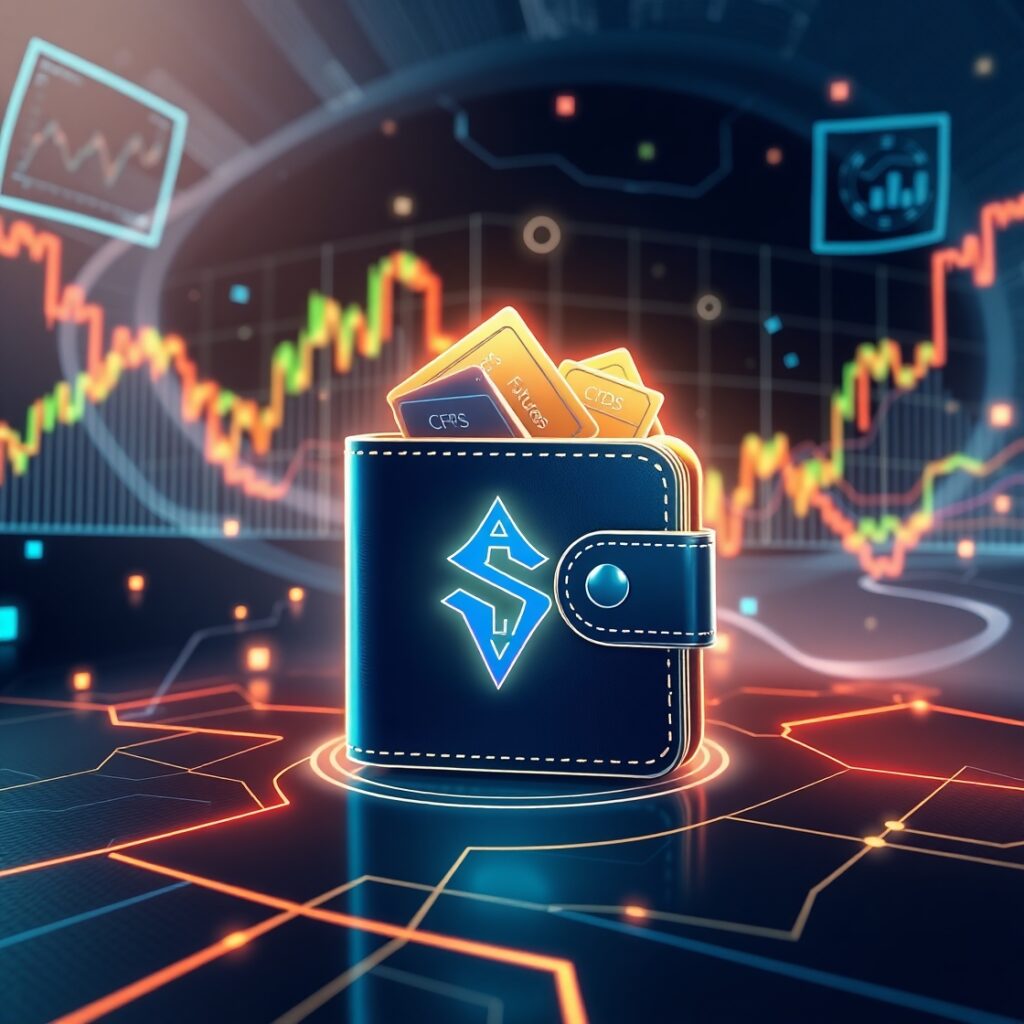
Key Insights
CFDs and futures are the two major derivatives in terms of trading in financial markets. Traders can speculate on price movements without any ownership of the underlying asset. But, CFDs and futures are quite different in terms of their structure, cost, and exposure to risk, making a significant consideration for the efficient risk management through trading done by such traders.
What Are CFDs?
These CFDs are derivative contracts that allow the speculation on price changes in an asset without owning the asset. The gain or loss is calculated based on the difference between the opening price and closing price of the contract.
Mechanics of CFD Trading
- Traders make a choice of a financial instrument to trade (stocks, forex, commodities) and open a position.
- They speculate on price movement (long or short).
- The broker settles the profit or loss based on the price difference at closing.
- No fixed expiry date, allowing flexible trading strategies.
Example of a CFD Transaction
- A trader buys a CFD on gold at $1,800 per ounce.
- If the price rises to $1,850, they earn $50 per unit.
- If the price falls to $1,750, they lose $50 per unit.
What Are Futures?
Futures contracts are basically standardized agreements allowing the buying or selling of an asset at a predetermined price and following a specified date in the future. Futures contracts are widely used in the financial markets for hedging purposes and also for speculation.
How Futures Contracts Function
- Contracts have a set expiration date.
- Traded on centralized exchanges with standardized contract sizes.
- Require margin deposits to open positions.
- Settlement can be in cash or physical delivery.
Example of a Futures Trade
- A trader agrees to buy 100 barrels of crude oil at $75 per barrel for delivery in three months.
- If the price rises to $80, they gain $5 per barrel.
- If it falls to $70, they lose $5 per barrel.
CFDs vs Futures: Core Differences
| Feature | CFDs | Futures |
| Expiry Date | No | Yes |
| Leverage | High | Varies |
| Market Access | OTC | Exchange-traded |
| Costs | Spread-based | Commissions + fees |
| Regulation | Broker-dependent | Exchange-regulated |
Contract Structure and Expiry Dates
CFDs have no expiration, allowing flexibility, while futures have fixed expiry dates, requiring traders to roll over contracts if they wish to maintain positions.
Leverage and Margin Implications
CFDs typically offer higher leverage, increasing profit potential but also magnifying losses. Futures require initial margin deposits and maintenance margins, making risk management essential.
Costs, Fees, and Commission Models
CFDs primarily charge through spreads, whereas futures involve exchange fees, commissions, and sometimes rollover costs.
Market Liquidity and Accessibility
Futures are highly regulated and traded on stock exchanges with huge amounts of liquidity, whereas CFDs are OTC instruments subject to broker liquidity.
Regulatory Considerations and Counterparty Risk
Futures are exchange-regulated, reducing counterparty risk. CFDs rely on broker stability, making regulation and broker reputation key considerations.
Evaluating the Risks: CFDs vs Futures
Market Volatility and Price Swings
Both instruments are sensitive to market fluctuations, but futures may experience higher volatility due to contract expirations and rollover effects.
Liquidity Concerns and Execution Stability
Futures generally offer better liquidity due to centralized trading, whereas CFD liquidity depends on the broker’s execution quality.
Leverage-Associated Risks in CFDs and Futures
Higher leverage in CFDs can lead to rapid losses, while futures traders must manage margin calls to avoid liquidation.
Counterparty Exposure and Default Risk
Futures benefit from clearinghouse guarantees, reducing default risk. CFD traders face counterparty risk depending on broker solvency.
Advantages and Disadvantages of CFDs and Futures
Why Traders Choose CFDs
- No contract expirations.
- Higher leverage and lower capital requirements.
- Simplicity and ease of access.
Strengths of Futures Trading
- Standardized contracts and exchange regulation.
- Better pricing transparency.
- Suitable for hedging strategies.
Potential Downsides of CFDs
- Higher spreads and broker dependency.
- Counterparty risk concerns.
- Risk of overleveraging.
Limitations of Futures Trading
- Fixed expiration dates requiring rollovers.
- Higher initial capital requirements.
- Exchange fees and commissions.
CFDs vs Futures: Selecting the Right Instrument
Key Factors to Consider
- Trading goals (speculation vs. hedging).
- Risk tolerance and capital availability.
- Market access and regulatory preferences.
When CFDs May Be the Better Choice
- Short-term speculative trades.
- Lower capital requirements.
- Flexible position management.
When Futures May Be More Suitable
- Long-term trading and hedging.
- Institutional and high-volume traders.
- Exchange-traded transparency and regulation.
Conclusion
CFDs and futures are different from each other, not by comparisons of what benefits they give or the risks that they carry. The right instrument will depend on a person’s choice with respect to trading style, risk appetite, and market strategy.
Frequently Asked Questions
Are CFDs riskier than futures?
Generally, the risk of loss associated with CFDs is higher because of the increased leverage, whereas futures require margin maintenance; however, they tend to have a more centralized clearing system.
Which among the two options is best for a beginner-CFD versus futures?
CFDs are well-suited for beginners due to easier market access and lower capital requirements while futures would need lots of understanding when it comes to risk management.
How do trading costs compare between CFDs and futures?
The major costs related to CFDs are the spread; on the other hand, the trading of futures incurs commissions, exchange fees, and at times rollover fees.
Are CFDs and futures suitable for hedging?
Hedging is possible with both instruments, but futures are regarded as hedging instruments by many since they have the benefits of structured contracts and regulatory oversight.
